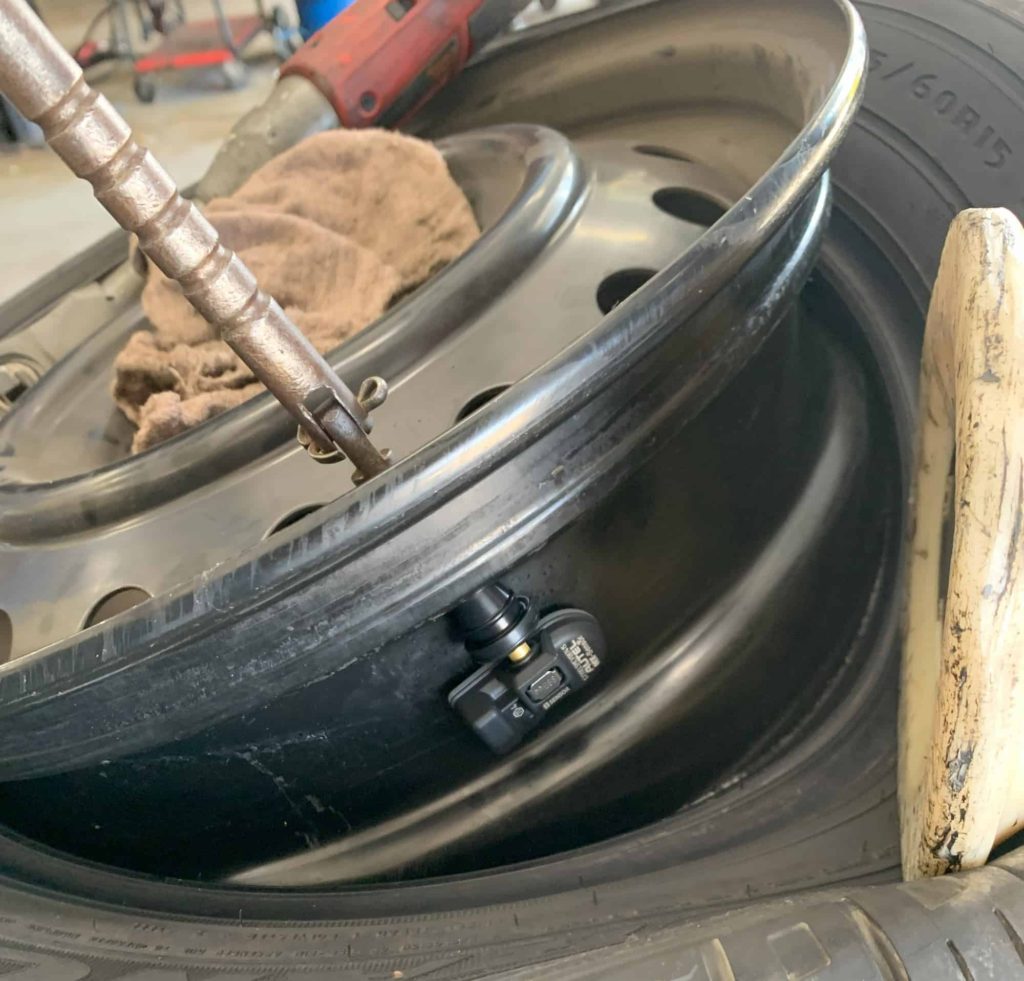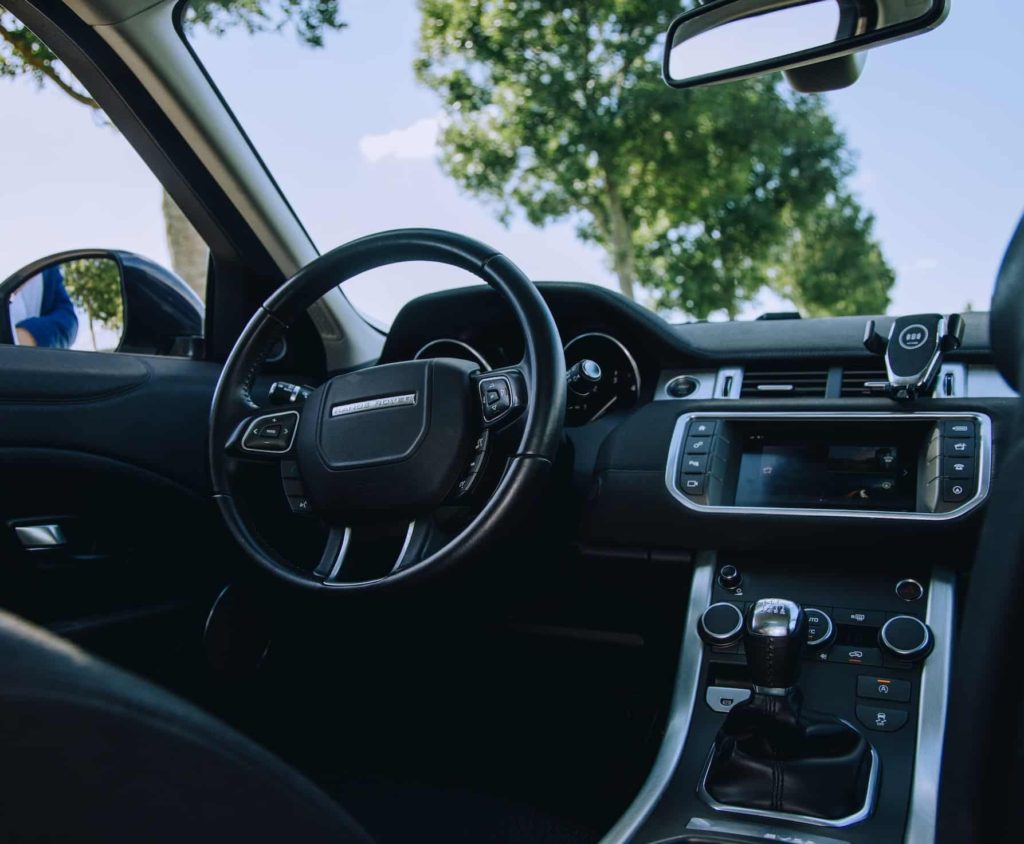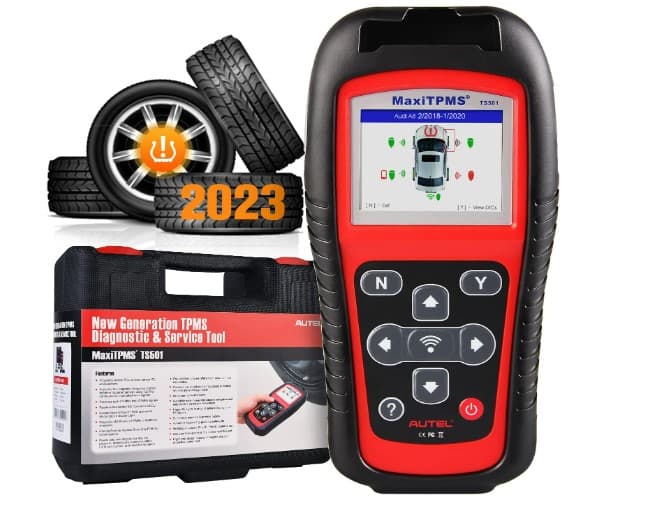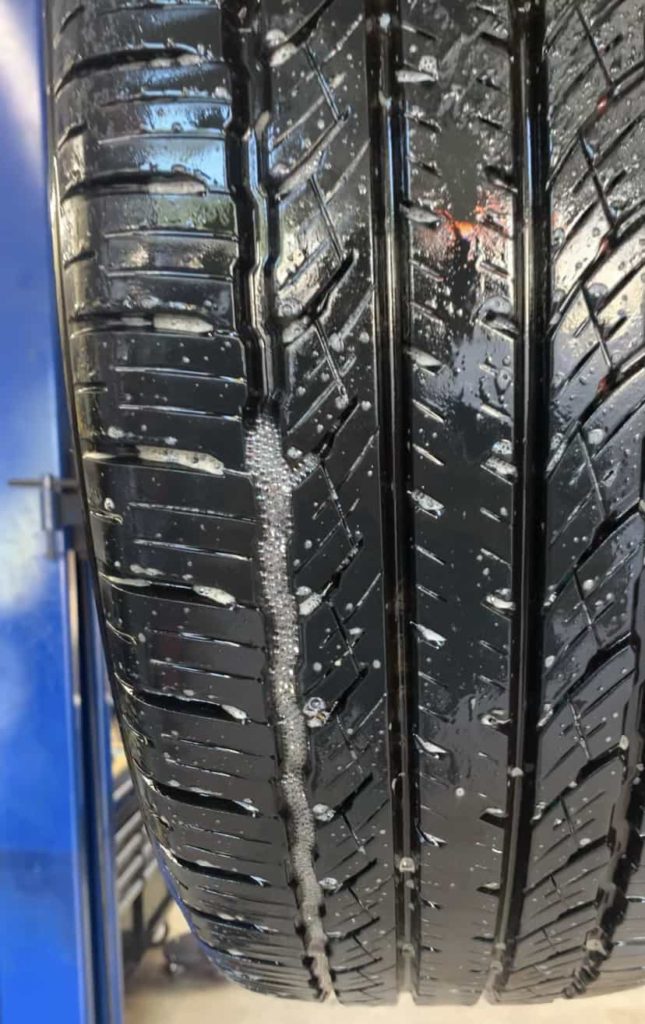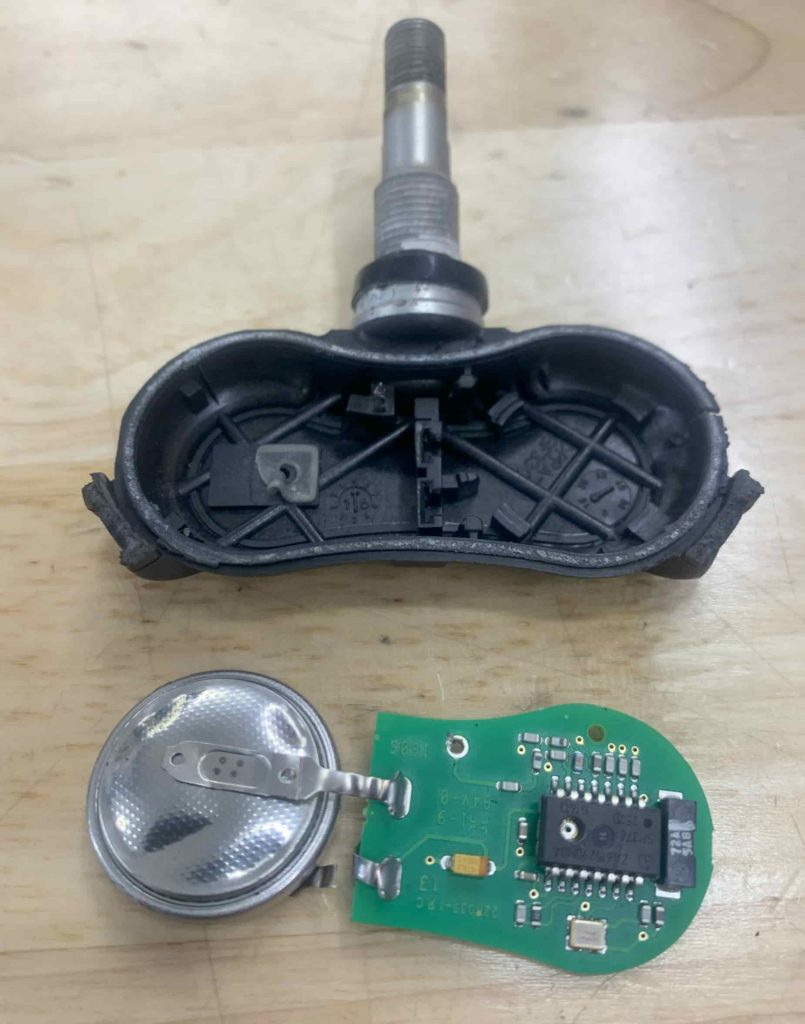How Does the Land Rover Defedner TPMS Work?
The Land Rover Defender tire pressure monitoring system is an extremely underrated safety feature that is made up of many different parts and components. Here’s how it works:
Sensors: Each wheel and tire, including the full size spare, is equipped with a TPMS sensor. This sensor is a small electronic device that measures the tire’s internal air pressure and temperature.
Radio Frequency Transmission: The sensors transmit data wirelessly through radio frequency (RF) signals to a central receiver module, located in the vehicle. The sensors send the data to the receiver module via 315 Mhz or 433 Mhz radio frequencies. The data is constantly being transmitted as well as at specific intervals and when there’s been a significant change in tire pressure.
TPMS Control Module: Once the data is transmitted to the vehicle, it’s interpreted by the TPMS control module/ receiver module (sometimes integrated into the vehicle’s body control module). This module processes the data to determine if the tire pressure is within the recommended range.
Alerts: If the tire pressure drops below or rises above the set threshold (15-20% below the recommended pressure), the system will trigger a warning. In the Land Rover Defender the instrument cluster displays a yellow/orange exclamation point within tire treads as the low tire pressure warning icon. The information system will also show the specific tire that has the pressure issue and what the pressure should be in brackets.
Battery: Each TPMS sensor is powered by its own individual battery. The TPMS receiver module is powered by the main 12 Volt battery.
Maintenance & Calibration: After rotating tires, changing tire sizes, or replacing sensors, the Defender’s TPMS will need to be recalibrated.
How to Recalibrate the Land Rover Defender Tire Pressure Light
Check and adjust all 4 tires pressure to the recommended pressure. (If you have a full size spare, check and adjust that tire also)
Let the SUV remain stationary for 10 minutes to make sure the TPMS can detect the change in pressure.
Drive the Land Rover Defender for at least 15 minutes above 16 Mph (25 km/h) for the TPMS system to recalibrate itself.
How to Check Current Tire Pressures
On the steering wheel select MENU/ok BUTTON
Scroll down to the SERVICE MENU using the down arrow.
Select the right hand arrow on the steering wheel
Select Tyre Pressure Check using the right arrow again.
After selecting the Tyre Pressure menu, you’ll see two different pressures displayed for each tire. The number without brackets is your current tire pressure. The number in brackets is the advised inflation pressure. The advised pressure will change as the temperature of the tires change from driving.
What Can cause the Land Rover Defender TPMS Light to Turn On?
Issues with TPMS Sensors: Defective sensors or weak batteries in the Land Rover Defender TPMS will cause a TPMS malfunction as well as inaccurate pressure readings on the information display.
Reasons for Pressure Drop: A myriad of reasons such as temperature variations, valve stem leaks, tire bead seal leaks, punctures, cracked wheels, elevation shifts, natural air seepage, and aged tires can all lead to diminished tire pressure.
Damage during Tire Mounting: A TPMS sensor can be easily broken if not careful during tire installation.
Improper Tire Inflation: Over-inflation or under-inflation of tires will cause the tire light to turn on.
Potential RF Disturbances: Devices within close range that are using radio frequencies (433 Mhz or 315 Mhz) similar to the TPMS sensors can cause inaccurate readings or lead to TPMS malfunctions.
Harm to TPMS Receiver: Damage to the wiring or connectors that plug into the TPMS receiver module will induce tire pressure system errors.
Wheels Missing Sensors: Using wheels without tire pressure sensors (for example, a separate set of winter or summer tires) will cause a TPMS malfunction.
Making Sense of Tire Pressure
Will the Weather Affect the Land Rover Tire Pressure?
The weather plays a crucial role in the Land Rover Defender’s tire pressure dynamics. As temperatures drop the air inside the tires contracts and leads to reduced pressure. The opposite happens when temperatures rise. For instance, a brisk winter morning can cause the tire pressure to dip below the recommended level and cause the Defender’s TPMS light to turn on. An accepted rule of thumb states that for every 10-12 Fahrenheit degree change in weather, the tire pressure will increase or decrease by 1-2 Psi. f
How to Check Land Rover Tire Pressure
Digital Tire Pressure Gauge: Use a digital tire pressure gauge, they tend to be the most accurate and easiest to use.
Cold Tires: Always check and adjust tire pressure when the tires are cold. This means the Defender has been parked for at least three hours. This ensures more accurate readings as heat from driving can expand the air inside and elevate the pressure.
Locate PSI Recommendations: Check the vehicle’s door jamb for a yellow and white sticker that shows the front and rear recommended tire pressures. (47 Psi F, 50 Psi R)
Unscrew Cap: Remove the valve caps.
Measure Pressure: Press the tire pressure gauge onto the tire’s valve stem. The gauge will display the current tire pressure.
Compare: Check if the measured pressure aligns with Land Rover’s recommendation. If it’s low, add air; if it’s high, release some air.
Adjust as Necessary: Use an air compressor to inflate the tire if it’s low. If the tire is overinflated, gently press the valve stem core of the valve stem to release air. Constantly check the pressure as you inflate or deflate the tires to get the exact pressure desired.
Replace Cap: Don’t forget to screw the valve cap back onto the valve stem to prevent dirt and debris from entering.
2023 Land Rover Defender Wheel Size and Tire Pressure
TIRE SIZE | FRONT PSI | REAR PSI |
255/60R20 | 47 | 50 |
255/65R19 | 47 | 50 |
255/70R18 | 47 | 50 |
275/45R22 | 47 | 50 |
How is the Land Rover Defender Impacted by Driving With Low Tire Pressure?
Overheated Tires: Less air in the tire means less heat dissipation which increases the risk of tire blowouts from excessive heat buildup. Just because there isn’t visible exterior tire damage does not mean that the inside of the tires are damage free.
Decreased Fuel Efficiency: Under Inflated tires increase rolling resistance and friction which makes the engine work harder and consume more fuel.
Reduced Handling: The Defender’s precision in steering and response to maneuvers can be compromised and cause unpredictable driving behavior.
Faster Tire Tread Wear: Underinflation results in uneven tire tread wear, especially on the outer edges of the tread.
Increased Braking Distance: Stopping the Defender may take longer when the tires are low on air.
Strain on Suspension: The Defender’s suspension system will experience additional stress leading to premature wear and tear on vehicle parts.
Diagnosing Land Rover Defender Tire Pressure light Problems
As frustrating as it might be, when the tire pressure light turns on, it turns on for a reason. Now finding that reason can be tricky. Assuming that the tire pressure is set exactly correct (47 Psi Front & 50 Psi Rear), it typically comes down to one of a few things:
A sensor battery is low or dead.
One or more tires are leaking.
The Land Rover Defender TPMS receiver module or ECU are no longer communicating with one or more tire pressure sensors.
The following are potential solutions to determine why your tire light is on and how to resolve the issue.
Solution 1: Is There a Tire Leaking?
The number one reason the tire pressure light turns on is a tire leak. If you pump up an under-inflated tire and the warning light turns off or resets after the recalibration procedure, but then illuminates again—whether in minutes, hours, or days—it strongly suggests there’s a leak in that tire or wheel. Time to locate the leak!
Solution 2: Clear the Land Rover Defender Temporary Diagnostic Trouble Codes
The Land Rover Defender’s low tire pressure indicator can be manually reset by erasing the low tire pressure diagnostic trouble code stored in the vehicle’s computer. This is done by disconnecting the primary 12-volt battery by interrupting power to the Engine Control Unit (ECU). Before disconnecting the battery, make sure the ignition is off and always disconnect the negative terminal first. This action clears all temporary DTCs including those that set off the tire pressure alert light. After you reconnect the negative terminal the Land Rover Defender starts its “relearning” process. To facilitate this, drive at a steady speed of 50 mph for at least 30 minutes. If the low tire alert turns off and then turns back on after or while driving, it indicates a faulty sensor that needs to be replaced or a tire is simply losing air from a leak.
Solution 3: Find Which Sensor is Causing the Problem
If you’re sure your tires aren’t leaking and you want to find which tire sensor is causing the tire light to turn on, you can assess each sensor with a TPMS diagnostic device. This method is generally consistent regardless of the TPMS diagnostic tool’s make, model, or brand. To assess each sensor, position the diagnostic tool close to the valve stem and choose the “test” or “trigger” function. Once all sensors are evaluated the device will provide a battery health report for each. Should any sensor display a “low” reading, fail to update, or not register or even be tested, it indicates that the particular TPMS sensor requires replacement.
Solution 4: Does the Tire Light Turn On & Off on its Own?
When you start the Land Rover Defender and the tire pressure light illuminates but then turns off as you drive, it indicates the tire pressure might be marginally under the suggested cold pressure. This scenario often arises with cold tires or those not recently driven; as they warm the pressure elevates and causes the light to deactivate. To address this make sure the front tires are at exactly 47 Psi and rear tires at exactly 50 Psi, when cold.
Solution 5: Overfill the Tires to Reestablish Communication
If the tire pressure light persists, consider a method of briefly overinflating the tires to reestablish sensor communication. Begin by letting out 10 to 15 Psi through the valve stem core. Then, inflate the tires to 52 Psi Front & 55 Psi Rear which is exceeding the recommended amount by 4-5 Psi. Next, drive the Land Rover Defender a few miles at speeds above 20 Mph with the overfilled tires. Lastly, release the excess air pressure and set the tires back to the recommended pressures. Drive the defender again.
Solution 6: Find a Tire Leak
To find out where a tire is leaking from all you need is a spray bottle, soap, water and a tire inflator. The first step is to figure out which tire is low on air and pump that tire up to 45-50 Psi. Next, fill and mix the spray bottle with water and soap so the solution is bubbly (you can also use windex or something similar). Generously spray the whole tire. Ensure you coat every section including the wheel’s bead area and the valve stem. Let the soapy solution sit briefly and then meticulously scan the tire for minuscule bubbles. If there’s a puncture or any air leakage of any kind, the escaping air will form small bubbles at the leak’s origin. Spot the bubbles, and you’ve pinpointed the leak!
Land Rover Tire Pressure Sensor Batteries
Each wheel of the Land Rover Defender has a dedicated TPMS sensor, with each sensor powered by its individual battery. The silver-oxide batteries resemble the ones used in wristwatches. Enclosed in a plastic casing, they’re soldered straight onto the sensor’s microcontroller. Typically the batteries have a lifespan of 5-10 years. When a sensor battery runs out of juice, the entire sensor needs to be replaced. Various factors can influence the battery’s longevity. NOTE: When one sensor needs to be replaced, it doesn’t necessarily mean they all need to be replaced.
Frequently Asked Tire Pressure Light Questions
Is it Safe to Drive With the Tire Light On?
If the low tire pressure indicator in your Land Rover Defender illuminates, ensure you stop and inspect the tire pressures as soon as possible. To determine the safety of continuing your journey, it’s crucial to understand the REASON behind the tire light. Driving with an unresolved air pressure problem is not advisable.
Why is the Tire Light Flashing?
A TPMS malfunction is when one or more tire pressure sensors loses communication with the TPMS receiver module and or ECU. The tire pressure light will flash for about 75 seconds and then stay lit every time you start the Defender. This usually means a tire pressure sensor needs to be replaced. A TPMS malfunction is not a low tire pressure issue but a tire pressure monitoring system issue.
Are Tire Plugs Safe?
Tire plugs provide a dependable solution to fix a punctured tire. When used correctly they can effectively seal the puncture and last for the tire’s entire lifespan. However, refrain from using them on a tire’s sidewall
Are Tire Sealants Safe to Use With TPMS Sensors?
Tire sealants should only be used as a last resort in an emergency situation. Tire sealants can damage the circuit boards inside the tire pressure sensors as well as disturb the tires balance. After using a tire sealant, bring your Defender to a professional and have them clean out the tire and test the tire pressure sensor.
Here is a link to the Land Rover Defender manual : https://www.ownerinfo.landrover.com/model/3E/2022/document/1667606
Everything in this article is applicable to all Land Rover Defender models and versions including the Land Rover Defender 130, Defender 110 and Defender 90.
Please note that this blog post contains Amazon affiliate links. This means that if you make a purchase through one of these links, we at TPMSRESET.COM may earn a small commission at no extra cost to you. We only recommend products that we personally use and believe in. Thank you for supporting us.

